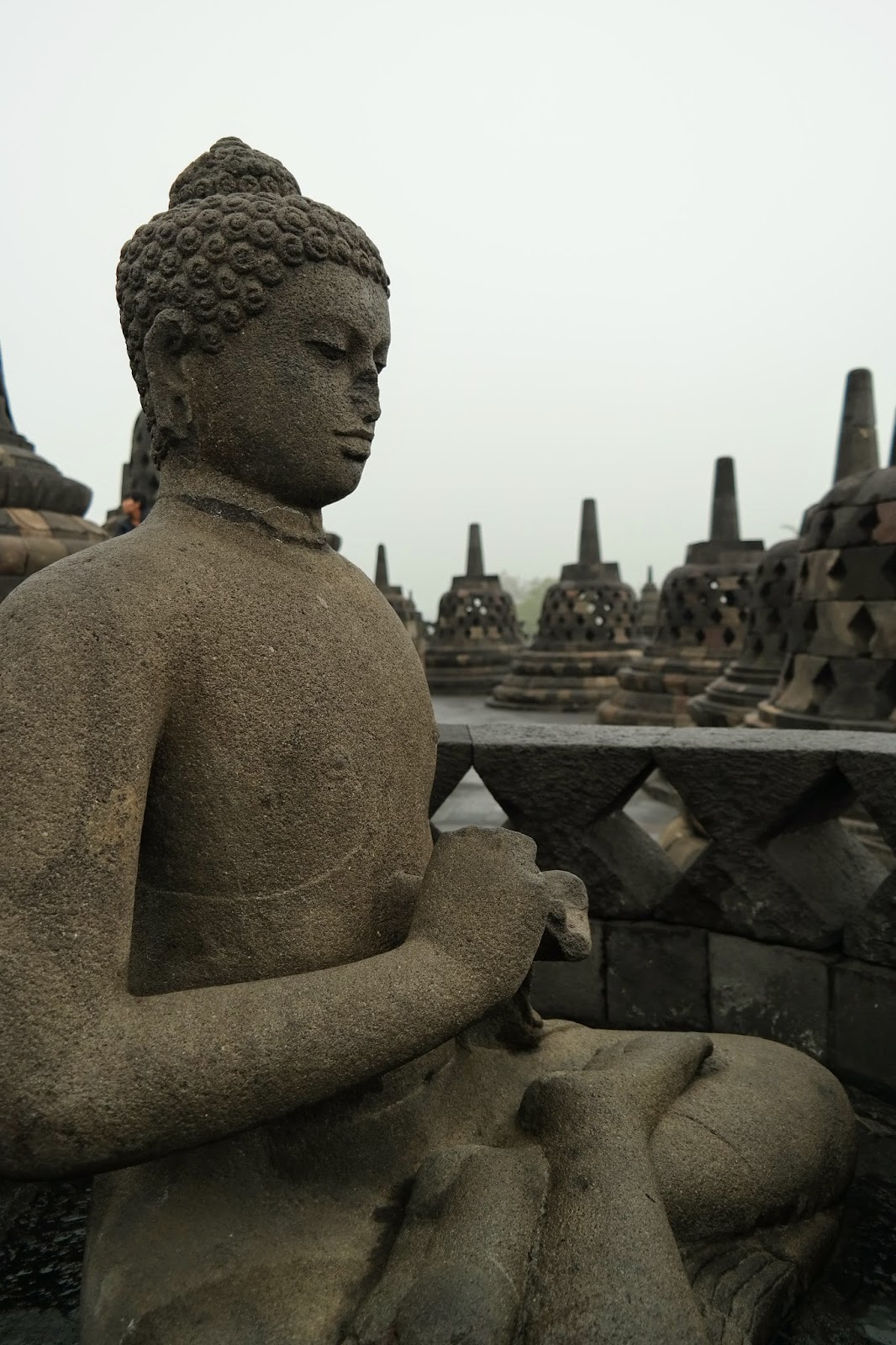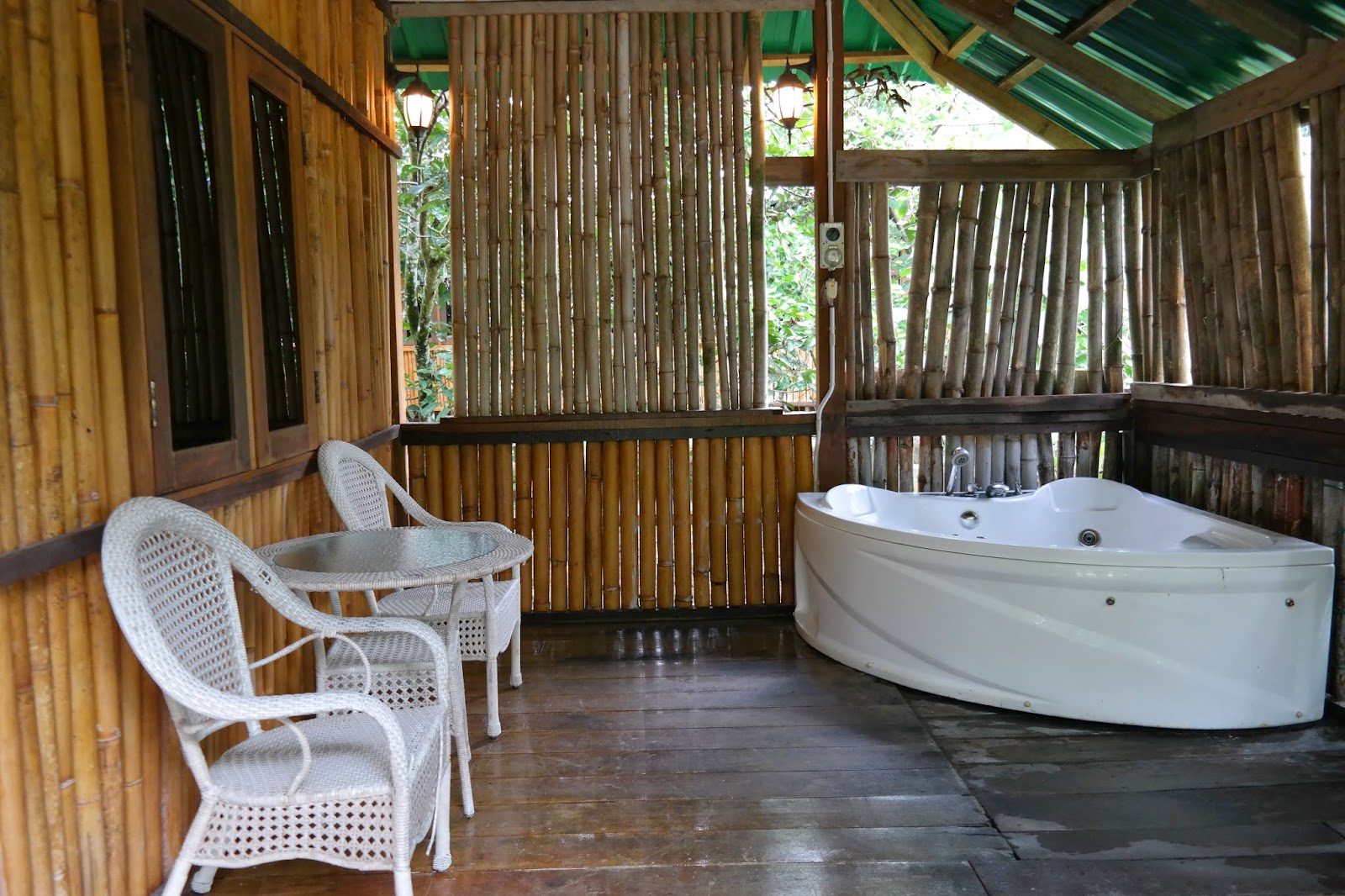Jakarta? No, Jogjakarta. Where? Central Java. Where? Indonesia. Oh, what's nice there? The Borobudur temple. There's such a temple at Jakarta? No, it's Jogjakarta!
That's the response I received when I tell people of the destination of my trip. Yeap, it's not very well known, so most people had trouble understanding why would I choose to visit. To see Borobudur, of course!
The trip was initially planned for February last year, but it was postponed for the eruption of Mount Kelud in eastern Java. Although not directly effected, but flights were halted and Borobudur was closed, so we were advised to re-plan. And we had "smartly" re-planned the trip to the wet season of the region, where storms and floods and tsunamis were imminent. Fortunately for us, we got in and out of Jogja safe and sound, albeit our spirits have been dampen by regular showers.
So, what's so grand about this Borobudur? Only that it's the world's largest Buddhist temple, built in the 9th century. Currently listed as a UNESCO World Heritage Site. What's intriguing is that it was not known who had built it, having its construction completely made out of stones. Volcanic stones to be exact.
It was a whole different feeling looking up at the magnificent structure in the dark and having to explore the vast temple with only a tiny flashlight - we had made our way to the top even before the sun was up. We had wanted to catch the spectacular view of the sunrise amidst the incredible sculptures but, unfortunately, what for a morning drizzle, it was utterly regrettable having to miss that. It would definitely have been a wonderful sight to behold.
Nevertheless, we were lucky to be allocated a very informative guide, who took us layer by layer and explained every carving, every sculpture, the history and myths that surrounded the temple, its construction and the ongoing restoration efforts by UNESCO. Heartfelt thanks to the guide who accommodated our every queries and requests.
Such a mystifying temple.....
Also making its home in Jogja is one of South East Asia's largest Hindu temple - the Candi Prambanan. An entirely different architecture, built in the 9th century as well and dedicated to the Gods of Brahma, Vishnu and Shiva. It tells a different story - of the Gods and the mythical entities that is used as their vehicles, of prince and princesses, and the story about the temple being built in one single night.
We were exploring the area in awe when the sky turned gloomy and it started pouring. With no where to run to, we took shelter on the cramped steps and under a narrow beam of the temple. At the end of about 30 minutes, the heavy downpour has left ankle deep water puddles around the temple's compound. Without wanting to be soaked further, we hurriedly left by waddling our way to the entrance, barefoot! What an experience!
Another highlight of Jogja would be the infamous Mount Merapi, one of the active volcanoes in Indonesia, which last erupted in 2010. We hired a jeep to take us up to the peak, and along the way the guide showed us the lava flows of the last eruption. I've never been near any fiery volcanoes before and was kind of excited to be able to reach the top. Yay! Only that the excitement turned to concerns when the guide told us that Merapi was predicted to erupt again in 2014 or early 2015. Oh my! And we were right on it! Thank the Gods that it didn't happen.
Merapi didn't want to show herself while we were there. She hid behind a curtain of clouds and mists. Yet another regretful incident. It was only on the last day of our stay that she allowed us a little peek....
There is a lot to be learned at Jogja - of the art, the culture, the history, the sights and the sounds. The people are humble and polite. They welcome you in every way and are proud to showcase what their city has to offer. Despite numerous natural disasters of volcanic eruption and earthquakes, they somehow managed to pick themselves up and move on. This is one trait which we have seen and admired.
Although we had a couple of disappointments from the trip, where we failed to catch certain sights that were unique to Jogja due to the poor weather, but at least we've step foot on them! Being there itself is more than good enough.
One spot struck off the travel list....
That's the response I received when I tell people of the destination of my trip. Yeap, it's not very well known, so most people had trouble understanding why would I choose to visit. To see Borobudur, of course!
The trip was initially planned for February last year, but it was postponed for the eruption of Mount Kelud in eastern Java. Although not directly effected, but flights were halted and Borobudur was closed, so we were advised to re-plan. And we had "smartly" re-planned the trip to the wet season of the region, where storms and floods and tsunamis were imminent. Fortunately for us, we got in and out of Jogja safe and sound, albeit our spirits have been dampen by regular showers.
So, what's so grand about this Borobudur? Only that it's the world's largest Buddhist temple, built in the 9th century. Currently listed as a UNESCO World Heritage Site. What's intriguing is that it was not known who had built it, having its construction completely made out of stones. Volcanic stones to be exact.
It was a whole different feeling looking up at the magnificent structure in the dark and having to explore the vast temple with only a tiny flashlight - we had made our way to the top even before the sun was up. We had wanted to catch the spectacular view of the sunrise amidst the incredible sculptures but, unfortunately, what for a morning drizzle, it was utterly regrettable having to miss that. It would definitely have been a wonderful sight to behold.
Nevertheless, we were lucky to be allocated a very informative guide, who took us layer by layer and explained every carving, every sculpture, the history and myths that surrounded the temple, its construction and the ongoing restoration efforts by UNESCO. Heartfelt thanks to the guide who accommodated our every queries and requests.
Such a mystifying temple.....
Also making its home in Jogja is one of South East Asia's largest Hindu temple - the Candi Prambanan. An entirely different architecture, built in the 9th century as well and dedicated to the Gods of Brahma, Vishnu and Shiva. It tells a different story - of the Gods and the mythical entities that is used as their vehicles, of prince and princesses, and the story about the temple being built in one single night.
We were exploring the area in awe when the sky turned gloomy and it started pouring. With no where to run to, we took shelter on the cramped steps and under a narrow beam of the temple. At the end of about 30 minutes, the heavy downpour has left ankle deep water puddles around the temple's compound. Without wanting to be soaked further, we hurriedly left by waddling our way to the entrance, barefoot! What an experience!
Merapi didn't want to show herself while we were there. She hid behind a curtain of clouds and mists. Yet another regretful incident. It was only on the last day of our stay that she allowed us a little peek....
There is a lot to be learned at Jogja - of the art, the culture, the history, the sights and the sounds. The people are humble and polite. They welcome you in every way and are proud to showcase what their city has to offer. Despite numerous natural disasters of volcanic eruption and earthquakes, they somehow managed to pick themselves up and move on. This is one trait which we have seen and admired.
Although we had a couple of disappointments from the trip, where we failed to catch certain sights that were unique to Jogja due to the poor weather, but at least we've step foot on them! Being there itself is more than good enough.
One spot struck off the travel list....




































